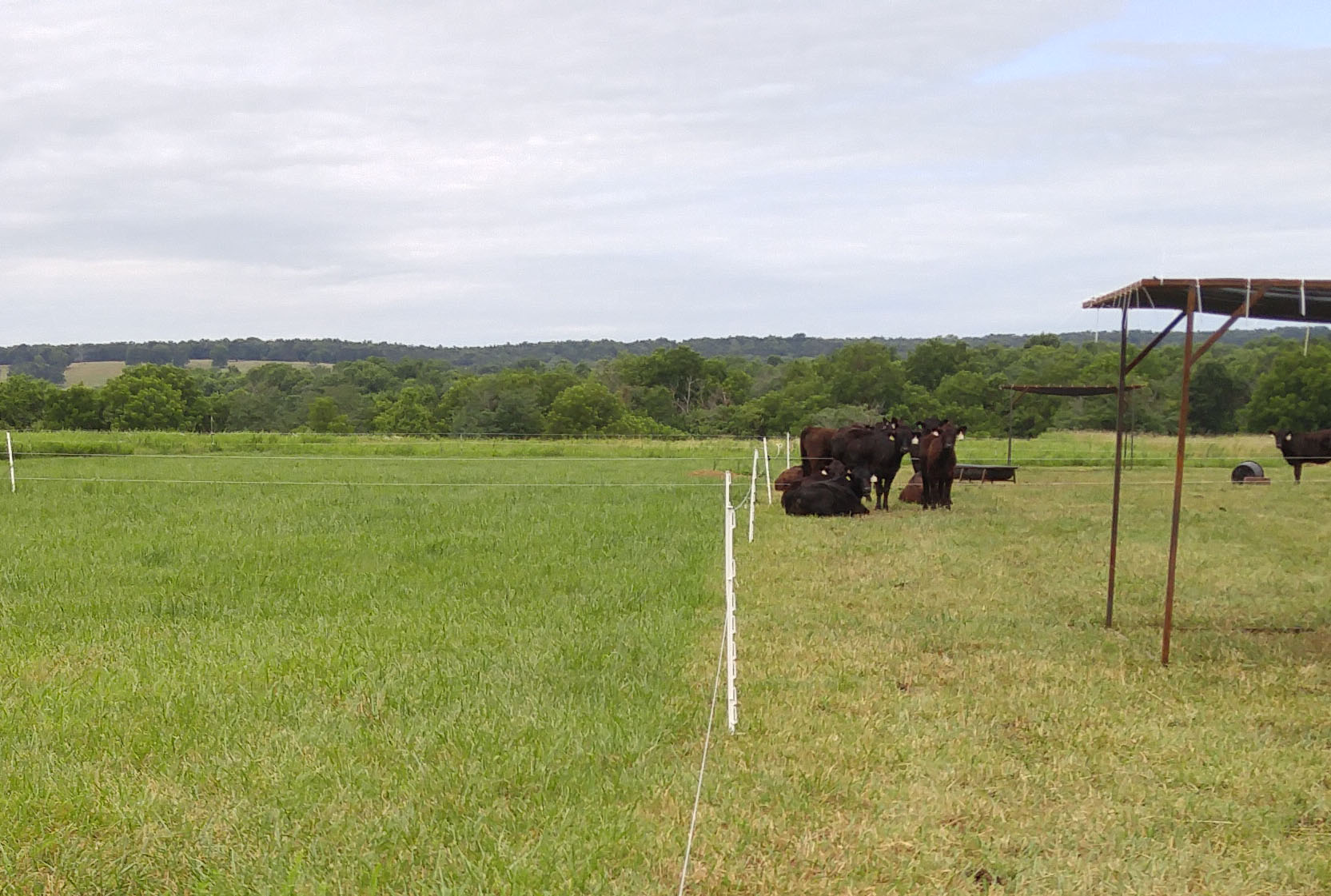
Strip grazing is one management technique that can extend the grazing season. | Download this photo.
Cattle Chat: Ways to extend the grazing season
Stockpiling forage through intensive grazing management may be a cost-effective way to provide nutrition to cattle
Aug. 23, 2022
By Lisa Moser, K-State Research and Extension news service
MANHATTAN, Kan. — Just as gardeners manage produce differently depending on the time of the season, so do cattle producers manage pastures so that the grazing season can be extended, said Kansas State University beef cattle experts on a recent Cattle Chat podcast.
One technique offered by Beef Cattle Institute nutritionist Phillip Lancaster is called stockpiling forage.
“Stockpiling is the practice of removing cattle from a pasture to allow regrowth through the late summer and early fall. This creates a pile of forage in the pasture than can be grazed through the late fall and early winter,” Lancaster said.
The amount of time cattle can be on the pastures will depend on the grass variety being grazed.
“This management technique works well for cool season grasses that are treated with nitrogen followed by rain leading to a good regrowth of the grass,” said veterinarian Bob Larson.
Lancaster said stockpiling can be done on native grass pastures as well, but the timing of grazing and management will be different.
“Native range pastures don’t need to be fertilized and cattle will have to come off the grass earlier in the summer to allow for the forage to stockpile through the late summer and into the fall,” Lancaster said.
With these potential costs, the experts agree that producers need to look at the expenses associated with this management strategy to determine if it is cost effective.
“Do the math. One bale of hay will feed a cow for 40 days, while a stockpiled acre of pasture should carry that cow 90 days, but there are costs of fertilizer and labor that need to be factored in,” Lancaster said.
Regarding labor, Lancaster said strip grazing is a technique that works well for stockpiling forage.
“With strip grazing a small area is contained by electric fence and the cattle are allowed to graze that grass to the ground before being moved to another area. Because this grass is dormant, producers don’t need to be concerned about plant regrowth,” Lancaster said.
An added benefit is the distribution of manure across the pastures, said Larson, which serves to help fertilize the pastures naturally.
To hear the full discussion, listen to the Beef Cattle Institute Cattle Chat podcast online.

